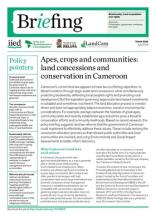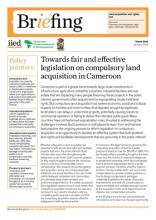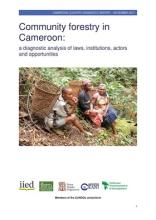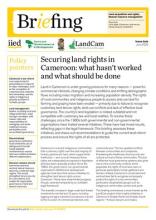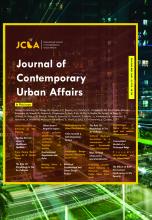/ library resources
Showing items 1 through 9 of 164.Cameroon’s current land law appears to have two conflicting objectives: to attract investors through large-scale land concessions while simultaneously protecting biodiversity, defending local people’s rights and promoting rural development.
Cameroon is part of a global trend towards large-scale investments in infrastructure, agriculture, extractive industries, industrial facilities and real estate that are displacing many people.
This brief study has been produced by the partners of the CoNGOs consortium to share our different knowledge and experience, and to set out a joint understanding of the current state of play in relation to community forestry in Cameroon.
In Cameroon, commercial and infrastructural developments are exerting increasing pressure on land and natural resources, which is in turn exacerbating the risks to the rights of indigenous peoples.
Land in Cameroon is under growing pressure for many reasons — powerful commercial interests, changing climate conditions and shifting demographic flows including mass migration and increasing population density.
One of the contemporary citys ambition nowadays is to be more comfortable flexible and coeval Although numerous urban design attempts have appeared to enhance the users gratification there are urgent demands to upgrade the classical public space to be more agreeable with the necessities of everyd
In contemporary times the worldwide trend of urban expansion has become an inexorable force This article engages in a comprehensive examination of the intricate dynamics surrounding urban sprawl and land utilization within the periurban regions of significant Algerian municipalities with a specif
The paper seeks to assess the impact of access to the land of Egypt on urban development in an attempt to identify policies and laws that can be categorized as a catalyst in urban conflict A systematicreview of Data on land tenure environment of Egypt land access land governance and tenure securi
This study examines the dynamics of fringe land invasion in Birbir Town southern Ethiopia by adopting a descriptive survey design with both qualitative and quantitative data analyses Primary data were acquired through a household survey key informant interviews focus group discussions and observa
Pagination
Land Library Search
Through our robust search engine, you can search for any item of the over 73,000 highly curated resources in the Land Library.
If you would like to find an overview of what is possible, feel free to peruse the Search Guide.

